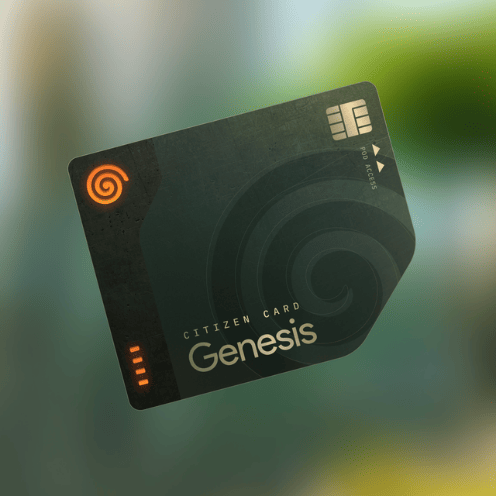Airdrops: The Amazing, Hidden Benefit of Trading Non-Fungible Tokens
I wonder if Dire Straits was just being prescient when, back in 1985, the British band sang Money for Nothing?
I mean, you really can apply that idea to this often-bonkers world of non-fungible tokens, or NFTs. This crazy space with crypto tokens that represent digital arts, digital gaming assets, and even digital pieces of real businesses.
Case in point: I woke up Tuesday morning to find an extra $1,462.50 in my crypto wallet.
It wasn’t there the night before. It was a gift—a so-called airdrop…a freebie that randomly lands in a crypto wallet.
It was from an NFT project I own called Portals, which will likely emerge as the biggest and most important metaverse on the internet. Which is sort of a redundant statement in that the “metaverse” is the internet, or rather what the internet will become…an immersive, 3D space that exists all around us and that we will interact with using virtual reality and augmented reality technology.
But that’s later…
For now, let me step back and explain that in the broader sense, these freebies go a long way toward defining that future. They are a major feature of the NFT space.
See, this new version of the web is largely being built by millennials and Gen Z, two generations that see the world very, very differently than baby boomers and Xers. They grew up during the Great Recession. They saw that raw capitalism feeds on itself and cares not who is hurt in that process.
So, they’re building something different…something that still looks like capitalism, but from a more human perspective.
Companies should seek profits, but they should give a generous share of those profits back to the people rather than hoard them for boards of directors and executives. (It’s sorta the way Wall Street used to work before dividends largely disappeared.)
Portals is a very good example of this.
Last November, it sold 5,000 Portals NFTs, what I call the OG 5K. Essentially, the people who own those NFTs are the company’s founders. Now, there’s no way that 5,000 Portals will ever cover the global need once millions and tens of millions of users start invading the Portals metaverse for shopping and gaming and all the various experiences.
The Portals teams knows this, so it’s expanding in various ways. But the project’s roadmap is clear: The OG 5K will always and forever be the financial beneficiaries of Portals’ growth.
To wit: The airdrop.
Each of the OG 5K received 10 Genesis Citizen Cards over two separate airdrops—five cards per drop.
These cards are effectively digital scrapbooks that will track a user’s every experience inside Portals. Your card will maintain scores and rankings in games. It will store collectible NFTs given away at metaverse concerts and other events. And it comes with its own “pod,” which is a miniature version of a Portals space—a place to hang out with a few friends and stream music or movies or play online games.
Those cards have value because of what they offer users.
When my second drop of five Genesis Citizen Cards landed in my wallet this week, they were each worth 6.5 Solana, the cryptocurrency in which they’re priced.
Solana at that moment was trading in the $45 range…meaning those five cards combined were worth $1,462.50…meaning the 10 cards I now have are worth nearly $3,000.
I haven’t sold any of my cards because I know they’re going to be worth more, soon, based on conversations I’ve had with the team.
Nevertheless, the point remains: Money for nothing.

Portals isn’t the only project where this happens. Not by a long shot.
I received a digital oil can recently from a project called Taiyo Robotics. No idea what that oil will be used for, though it will be used for something. That NFT was worth more than $2,100 the day it landed in my wallet.
Another project I’ve mentioned in previous columns, Cets on Creck, airdropped a psychedelic milk bottle about a month ago that will play into the project in some way. It, too, was worth more than $2,000 at that time.


A Taiyo Robotics oil can and a Cets on Creck milk bottle.
I know it’s hard to wrap your head around these facts because it’s so different that what you and I grew up with in terms of “investing.” But this is what investing looks like in the NFT world. It’s an entirely different, more benevolent view of capitalism. And it’s a different way of running a company.
A lot of this is still a work-in-progress. The NFT economy is still very new.
But being “new” is where the greatest wealth always exists, no matter the asset class. NFTs are the stock market of Web3—the next iteration of the internet.
The goal for those who want to earn life-changing wealth in this space:
- Learn how the NFT market works.
- Accept that NFT assets look like cartoons.
- But realize that behind those cartoons are very often real businesses, providing real services to companies and consumers.
The investors who understand that, and who learn to trade NFTs, are the ones who are going to regularly wake up and find money for nothing in their wallet.

